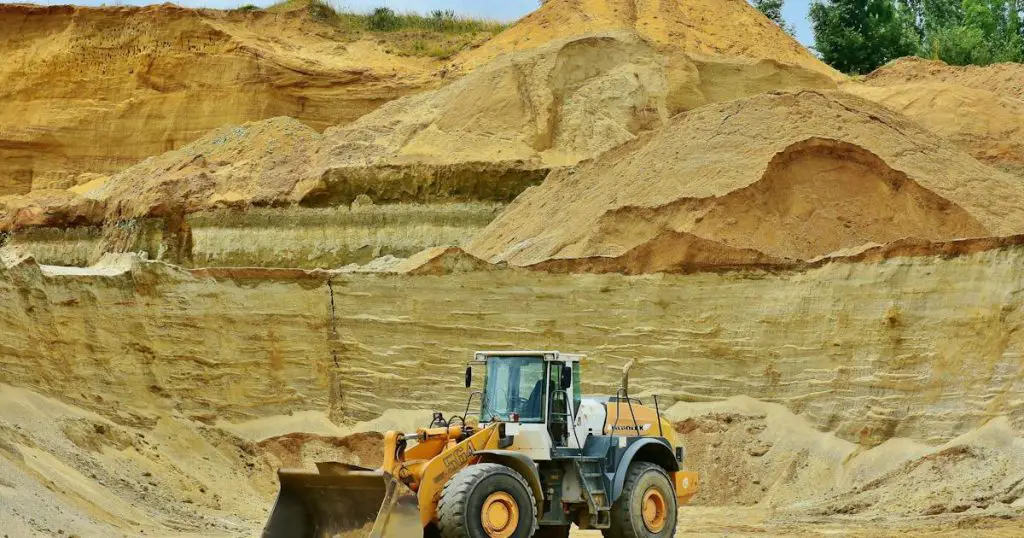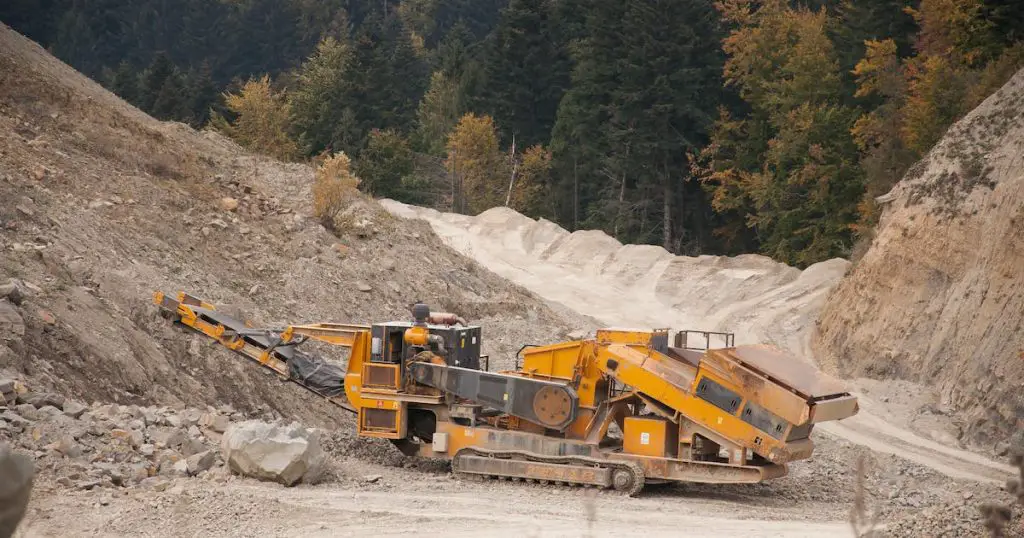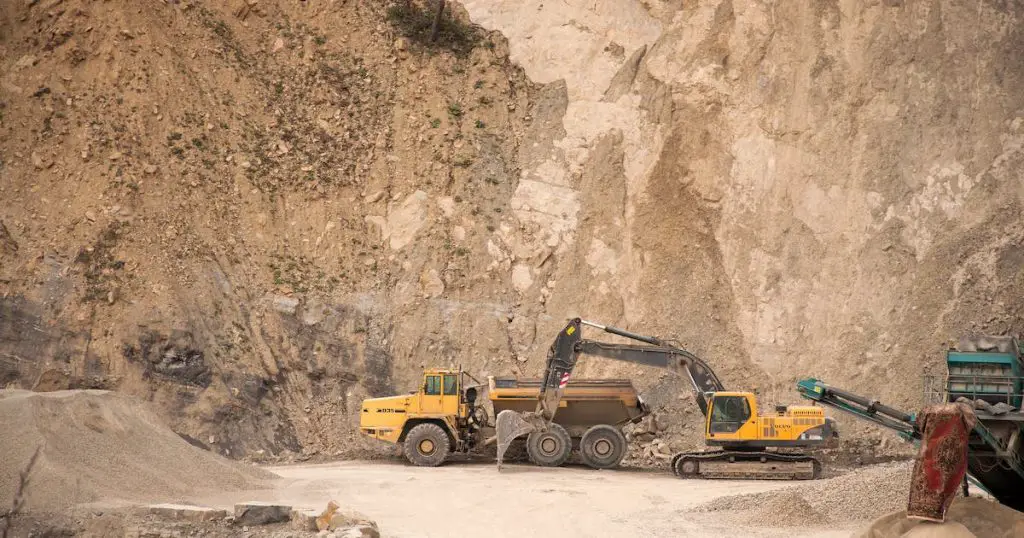Nestled in the heart of Arizona, Prescott stands as a living testament to the profound impact of mining on its architectural evolution. From rustic mining camps to grand Victorian structures, the town’s buildings weave a tale of economic prosperity and cultural diversity brought about by the mining boom.
This exploration delves into how mining shaped Prescott’s distinctive architectural style, blending historical charm with modern resilience.
As we journey through Prescott’s streets, each building and landmark reveals a chapter in the town’s rich narrative, a story of transformation driven by the veins of minerals that once defined its very essence.

The Mining Boom Era
The mining boom era marked a defining chapter in Prescott’s history, catalyzing profound changes in its architectural and societal landscape. With the discovery of precious minerals, Prescott transformed rapidly from a modest settlement into a bustling hub, attracting a diverse influx of miners, entrepreneurs, and settlers.
This period was characterized by a surge in economic activity, which directly influenced the town’s architectural style. Structures initially were simple and functional, catering to the immediate needs of a growing population. However, as wealth from the mines poured in, more elaborate and ornate buildings began to emerge, reflecting the newfound prosperity and optimism.
This era laid the foundation for Prescott’s distinctive architectural identity, blending utility with grandeur, a testament to the town’s resilience and adaptability in the face of rapid change.
The Onset of Mining in Prescott
In the mid-19th century, Prescott emerged as a pivotal mining town following the discovery of gold, silver, and copper in the surrounding areas. This period marked the genesis of a transformative era in the town’s history, with a surge in economic activity fueling rapid development. Structures during this period were primarily utilitarian, reflecting the immediate needs of a burgeoning mining community.
The initial exploration phases were characterized by rudimentary buildings, often hastily constructed from local materials. This was a time of intense change, with the town’s skyline continually evolving to accommodate the influx of miners and entrepreneurs drawn by the promise of wealth.
Economic Impact of Mining on Prescott
The mining boom brought unprecedented prosperity to Prescott, leading to a population explosion and a vibrant economic landscape. This newfound wealth was a catalyst for architectural advancements, as the town transitioned from a collection of mining camps to a more established community.
The economic prosperity of this era is evident in the grandeur of buildings constructed during this time. Banks, commercial buildings, and opulent homes began to dot the Prescott landscape, reflecting the wealth generated from the mines.
Architectural Evolution
Prescott’s architectural evolution is a vivid reflection of its transition from a mining-centric town to a multifaceted urban community. Initially dominated by pragmatic structures suited to mining needs, the town’s architecture gradually embraced more elaborate styles as prosperity from mining flowed in.
Victorian, Gothic, and Neoclassical influences began to emerge, showcasing the town’s growing economic and cultural sophistication. This shift from functional to aesthetic in building design mirrored the changing aspirations and identity of Prescott’s residents.
The use of local materials like stone, iron, and timber, borrowed from mining practices, further added a distinctive character to these structures. As a result, Prescott’s architectural landscape became a harmonious blend of practicality, elegance, and historical significance, capturing the essence of its transformative journey through the ages.
Transition from Functional to Aesthetic
As Prescott matured, the architectural focus shifted from purely functional structures to more aesthetically pleasing designs. This transition was marked by the adoption of various architectural styles, each reflecting the evolving tastes and aspirations of the town’s residents.
The change was not just in form but also in function, as buildings began to serve more than just the immediate needs of a mining town. They became symbols of prosperity and cultural sophistication, with architects and builders experimenting with different styles and materials.
Prominent Architectural Styles Influenced by Mining
The wealth from mining enabled the incorporation of elaborate architectural styles such as Victorian, Gothic, and Neoclassical. These styles, often reserved for the more affluent societies, were now adorning the streets of Prescott, symbolizing its metamorphosis from a rugged mining town to a cultured urban center.
Each style brought its unique flair to Prescott’s landscape, with intricate designs, elaborate facades, and ornate interiors becoming common features in buildings across the town. These architectural styles, though rooted in European traditions, were adapted to local needs and materials, resulting in a distinctive Prescott flavor.
Key Buildings and Landmarks
Prescott’s architectural tapestry is richly embroidered with key buildings and landmarks that stand as enduring symbols of its mining heritage. Iconic structures like the Yavapai County Courthouse and the Hassayampa Inn encapsulate the grandeur and optimism of the mining boom era.
These landmarks, alongside the quaint Victorian homes and historic commercial buildings, paint a vivid picture of Prescott’s past glory. Each edifice tells its own story, from the opulent mansions built by mining magnates to the humble cottages of the miners, collectively forming a mosaic that reflects the town’s economic and social history.
These buildings, more than mere structures, are custodians of Prescott’s legacy, serving as physical reminders of the town’s journey through times of prosperity, decline, and resurgence.
Iconic Buildings Shaped by Mining Wealth
The wealth generated from mining directly influenced the construction of several iconic buildings in Prescott. The Yavapai County Courthouse, for instance, stands as a testament to this era, with its imposing structure and elegant design reflecting the prosperity of the mining boom.
Similarly, the Hassayampa Inn, with its rich history and architectural grandeur, tells the story of Prescott’s golden days.
These buildings were not just functional spaces; they were symbols of the town’s affluence and aspirations, serving as focal points for community and civic life.
Residential Architecture: Mansions and Cottages
The residential architecture of Prescott during the mining boom was a study in contrasts. On one end of the spectrum were the opulent mansions built by mining magnates, showcasing lavish designs and luxurious amenities.

On the other end were the modest cottages of the miners, reflecting the more practical and straightforward aspects of life in a mining town.
This dichotomy in residential architecture provided a vivid illustration of the social hierarchy of the time, with each structure telling its own story of the people who lived there and their place in the mining society.
Cultural and Social Impacts
The mining era in Prescott had a profound impact on both the cultural and social fabric of the town. The architectural landscape, shaped by the wealth and diversity of the mining industry, became a canvas reflecting the town’s evolving social dynamics.
Buildings not only served functional purposes but also became symbols of social status, cultural identity, and community cohesion. As a melting pot of various ethnic groups attracted by mining opportunities, Prescott’s architecture showcases a rich amalgamation of styles and influences.
This diversity in design speaks volumes about the town’s inclusive spirit, where different cultural identities were embraced and reflected in its buildings, fostering a sense of unity and shared heritage within the community.
The Role of Mining in Community Development
Mining played a pivotal role in shaping the social and cultural landscape of Prescott. The town’s architectural evolution was not just a matter of style and aesthetics; it was deeply intertwined with the social fabric of the community. Buildings became arenas for social interaction, reflecting the diverse backgrounds and aspirations of Prescott’s inhabitants.
The architecture of Prescott during the mining era was a mirror of the town’s evolving social hierarchy. Buildings were not merely structures; they were social statements, delineating the lines between the affluent and the working class.
Preservation of Mining-Influenced Architecture
In recent years, the preservation of Prescott’s mining-influenced architecture has become a crucial aspect of the town’s cultural conservation.
Efforts have been undertaken to maintain and restore historic buildings, ensuring that the architectural legacy of the mining era continues to enrich the town’s character. These initiatives have not only preserved the physical structures but also kept alive the stories and histories they embody.
Organizations like the Prescott Preservation Commission have played a pivotal role in these conservation efforts, advocating for the protection of historic buildings. Their work ensures that future generations can experience and appreciate the architectural heritage of Prescott.
Architectural Reflection of a Diverse Community
Prescott’s architectural landscape during the mining boom was also a reflection of its ethnically diverse community. The town attracted people from various backgrounds, each contributing to the architectural tapestry of Prescott. This diversity is evident in the eclectic mix of architectural styles and influences seen across the town.
Buildings in Prescott, from churches to commercial structures, exhibit a blend of influences, showcasing elements from different cultures and traditions. This architectural diversity is a testament to the town’s inclusive and multicultural history, shaped significantly by the mining industry.
Decline and Legacy
The decline of mining in Prescott marked a significant turning point, leading to a shift in architectural trends and economic foundations. However, this period did not signify an end but rather the beginning of a new chapter in the town’s history.
The legacy of mining continues to resonate through Prescott’s streets, with its rich architectural heritage acting as a tangible link to the past. Efforts to conserve and repurpose historical buildings have ensured that these structures remain relevant and cherished parts of the community.
Today, Prescott stands as a poignant example of how a town can embrace its history, adapt to changing times, and preserve its unique character, turning a period of decline into an era of cultural revival and architectural renaissance.
The Decline of Mining and Its Impact on Architecture
The decline of mining in the early 20th century had a profound impact on Prescott’s architecture. As the economic foundation shifted, so did the architectural trends. The town saw a gradual move away from the opulent and grandiose styles of the mining boom to more modest and practical designs.
This transition marked a new chapter in Prescott’s architectural narrative, reflecting the changing fortunes and priorities of its residents. The end of the mining era did not just change the town’s economic landscape; it also left an indelible mark on its architectural identity.
Architectural Conservation and Revitalization
In response to the decline of mining, efforts have been made to conserve and revitalize historic buildings in Prescott. These initiatives have focused on repurposing old structures, giving them new life and relevance in the modern context. Through adaptive reuse, buildings that once served the mining industry are now home to cultural, commercial, and residential spaces.
This approach to conservation not only preserves the architectural heritage of Prescott but also contributes to the town’s ongoing economic and cultural vitality. It is a way of bridging the past and the present, ensuring that the architectural legacy of the mining era continues to be a living part of Prescott’s urban landscape.
Legacy of Mining in Modern Prescott Architecture
Even today, the legacy of mining is palpable in Prescott’s modern architecture. Contemporary designs often pay homage to the town’s historical roots, incorporating elements inspired by the mining era. This blending of old and new ensures that the town’s architectural heritage remains a vibrant and influential force.
Modern Prescott has managed to strike a balance between preserving its historical identity and embracing contemporary architectural trends. This synthesis is a testament to the town’s resilience and adaptability, reflecting its ability to evolve while honoring its past.
Comparative Analysis
Comparing Prescott’s architectural journey with other mining towns across the globe reveals a fascinating tapestry of similarities and distinct nuances. While many mining towns share a common architectural evolution, marked by utilitarian structures that gradually gave way to more ornate designs as prosperity grew, Prescott stands out for its unique blend of styles and its commitment to preservation.
Unlike some of its counterparts, which have seen their historical buildings replaced by modern structures, Prescott has managed to retain its historic charm, carefully integrating contemporary needs with its rich heritage.
This balance between past and present in Prescott offers valuable insights into sustainable urban development and highlights the importance of preserving cultural identity amidst change.
Prescott vs. Other Mining Towns in the U.S.
Comparing Prescott with other mining towns in the U.S. reveals both similarities and unique distinctions in architectural styles. While many mining towns share common themes such as the use of local materials and the influence of wealth on architectural design, Prescott stands out for its particular blend of styles and its efforts in preservation.
The town’s ability to maintain its architectural heritage while adapting to modern needs sets it apart from many of its counterparts, offering valuable insights into sustainable urban development and cultural preservation.
Global Influence: Mining Towns Worldwide
A global comparison with other mining towns highlights the universal impact of mining on architecture. From the Victorian terraces of Australia’s Ballarat to the colonial buildings of South Africa’s Johannesburg, the architectural imprints of mining are a worldwide phenomenon.
This comparative analysis underscores the shared experiences of mining towns across different continents, revealing common threads in how these communities have evolved and responded to the challenges and opportunities presented by mining.

Lessons Learned from Prescott’s Architectural Evolution
Studying Prescott’s architectural evolution offers several key lessons, particularly in the areas of sustainability and cultural preservation. The town’s experience underscores the importance of balancing economic development with heritage conservation, ensuring that growth and progress do not come at the expense of historical and cultural identity.
Prescott’s journey also highlights the value of community involvement in preservation efforts, demonstrating how collective action can play a crucial role in maintaining and celebrating a town’s architectural heritage.
FAQs: Influence of Mining on Prescott’s Architectural Style
Are there any remaining buildings that directly reflect the mining era in Prescott?
Yes, numerous buildings in Prescott, such as the Yavapai County Courthouse and the Hassayampa Inn, are enduring symbols of the mining era. These structures, along with several residential buildings, reflect the architectural styles and materials prevalent during the mining boom.
What efforts are being made to preserve these historical structures?
Organizations like the Prescott Preservation Commission are actively involved in conserving historic buildings. Their efforts, coupled with community initiatives and local regulations, aim to protect and maintain these structures for future generations.
How does Prescott’s architectural journey compare with other former mining towns?
While Prescott shares common themes with other mining towns, such as the influence of mining wealth on architecture, it stands out for its successful blend of historic preservation and modern adaptation, making it a unique case study in balancing heritage and progress.
Conclusion
Prescott’s architectural landscape is a vivid tapestry woven through the influence of its mining past. From the utilitarian structures of the early mining days to the opulent buildings of the boom era, and onto the modern adaptations, Prescott’s buildings tell a story of resilience, diversity, and evolution.
The town’s ability to embrace its rich history while adapting to contemporary needs serves as a beacon for other communities navigating the challenges of preserving their cultural heritage in a modern world.
Prescott’s architectural journey is not just about buildings; it’s about the spirit of a community that has thrived through change, holding onto its past while boldly stepping into the future.



Leave a Comment
You must be logged in to post a comment.